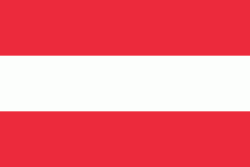Alsergrund (Gemeindebezirk Alsergrund)
Alsergrund (Central Bavarian: Oisagrund) is the ninth district of Vienna, Austria (9. Bezirk, Alsergrund). It is located just north of the first, central district, Innere Stadt. Alsergrund was incorporated in 1862, with seven suburbs. As a central district, the area is densely populated. According to the census of 2001, there were 37,816 inhabitants over 2.99 square km (1.15 sq. mi).
Many departments of the University of Vienna (main university), TU Wien and the University of Natural Resources and Life Sciences (BOKU) are located in Alsergrund. Until 2013 the University of Economics and Business (Wirtschaftsuniversität Wien) was also located in the 9th district, but eventually moved to the 2nd district. There are also many large hospitals, including the biggest in Vienna, the AKH (Allgemeines Krankenhaus, German for General Hospital).
Alsergrund is associated with many notable names of Viennese art and science. It is the birthplace of Romantic composer Franz Schubert. Classic music composer Ludwig van Beethoven died here in his apartment at Schwarzspanierstraße 15. Berggasse 19 is the former residence and office of Sigmund Freud. It was Freud's home from 1891 until his flight to England in 1938, and is currently the site of the Vienna Sigmund Freud Museum. Most of the patients Freud treated during the development of his theories of psychoanalysis visited him at his Alsergrund office.
In addition, the park in front of the Votivkirche, on the corner of Währingerstrasse and Schottenring, was named after Freud, in memory of his frequent visits there.
Alsergrund is situated in north-central Vienna. It covers 2.99 km² (1.15 sqmi) making it the seventh smallest district of Vienna. North to South the district covers 2,35 km (3.8 mi) from the northernmost point of the Gürtel boulevard down towards the first district. The main east–west axis is located between Augarten Brücke and Zimmermannplatz (2 km, 3.2 mi). The district is delimited by: Gürtel in the west, the Danube Canal in the east, as well as the Maria-Theresien-Straße, Universitätsstraße and Alserstraße in the south. Neighbouring districts are Döbling in the north, Währing and Hernals in the west, Josefstadt and Innere Stadt in the south. In the east, Alsergrund is separated by the Danube Canal from Brigittenau and Leopoldstadt.
Many departments of the University of Vienna (main university), TU Wien and the University of Natural Resources and Life Sciences (BOKU) are located in Alsergrund. Until 2013 the University of Economics and Business (Wirtschaftsuniversität Wien) was also located in the 9th district, but eventually moved to the 2nd district. There are also many large hospitals, including the biggest in Vienna, the AKH (Allgemeines Krankenhaus, German for General Hospital).
Alsergrund is associated with many notable names of Viennese art and science. It is the birthplace of Romantic composer Franz Schubert. Classic music composer Ludwig van Beethoven died here in his apartment at Schwarzspanierstraße 15. Berggasse 19 is the former residence and office of Sigmund Freud. It was Freud's home from 1891 until his flight to England in 1938, and is currently the site of the Vienna Sigmund Freud Museum. Most of the patients Freud treated during the development of his theories of psychoanalysis visited him at his Alsergrund office.
In addition, the park in front of the Votivkirche, on the corner of Währingerstrasse and Schottenring, was named after Freud, in memory of his frequent visits there.
Alsergrund is situated in north-central Vienna. It covers 2.99 km² (1.15 sqmi) making it the seventh smallest district of Vienna. North to South the district covers 2,35 km (3.8 mi) from the northernmost point of the Gürtel boulevard down towards the first district. The main east–west axis is located between Augarten Brücke and Zimmermannplatz (2 km, 3.2 mi). The district is delimited by: Gürtel in the west, the Danube Canal in the east, as well as the Maria-Theresien-Straße, Universitätsstraße and Alserstraße in the south. Neighbouring districts are Döbling in the north, Währing and Hernals in the west, Josefstadt and Innere Stadt in the south. In the east, Alsergrund is separated by the Danube Canal from Brigittenau and Leopoldstadt.
Map - Alsergrund (Gemeindebezirk Alsergrund)
Map
Country - Austria
 |
 |
| Flag of Austria | |
Austria emerged from the remnants of the Eastern and Hungarian March at the end of the first millennium. Originally a margraviate of Bavaria, it developed into a duchy of the Holy Roman Empire in 1156 and was later made an archduchy in 1453. In the 16th century, Vienna began serving as the empire's administrative capital and Austria thus became the heartland of the Habsburg monarchy. After the dissolution of the Holy Roman Empire in 1806, Austria established its own empire, which became a great power and the dominant member of the German Confederation. The empire's defeat in the Austro-Prussian War of 1866 led to the end of the Confederation and paved the way for the establishment of Austria-Hungary a year later.
Currency / Language
| ISO | Currency | Symbol | Significant figures |
|---|---|---|---|
| EUR | Euro | € | 2 |
| ISO | Language |
|---|---|
| HR | Croatian language |
| DE | German language |
| HU | Hungarian language |
| SL | Slovene language |















